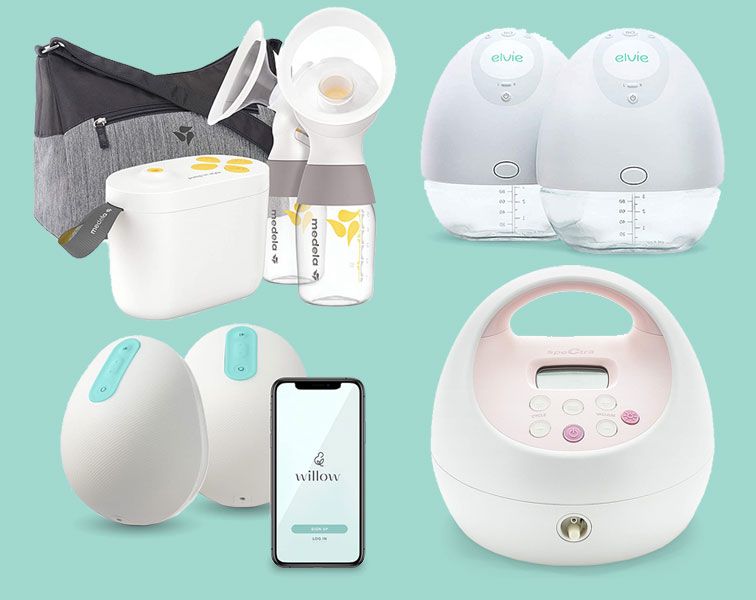When it comes to the first few weeks of breastfeeding, everyone is a beginner that first time around! Many women will have set a breastfeeding goal: three months, six months, one year – whatever feels right.
During the first several weeks of breastfeeding those goals may seem impossible to accomplish.
How do women tolerate the pain, the frequency, and the engorgement for six months or a year? They don’t – if you can make it through the first six weeks or so, you are well on your way to an easier and much more acceptable breastfeeding relationship.
Breastfeeding for Beginners – What you Need to Know
The early weeks for baby are full of learning and development – let’s use baby’s current skills and reflexes to create breastfeeding success.
In terms of intellectual development, any intellectual stimulation is very tiring for babies at this stage.
Breastfeeding skin-to-skin will prevent over stimulation and encourage brain development.
The overstimulated baby is hard to feed – mouth is tight, closed eyes can’t see mommy’s face. Cut down on stimulation and breastfeed as much as possible to help baby transition to our noisy, cold, busy world.
Physically, babies can see 8 – 10 inches at this age, about the distance between baby’s eyes and mommy’s face when breastfeeding. Babies see black, white and grey – notice how the areola is dark compared to the breast skin – babies use this color contrast to find the nipple. Uncover and allow baby to see your bare chest, it will assist with latch.
- The most prevalent reflex at this developmental stage is the sucking reflex. Babies will suck vigorously anytime something is placed in their mouths – it is mom’s job to make sure that mouth is positioned correctly when the sucking begins to cut down on painful latch and potential damage. Quick Note: If you are offering bottles in addition to breast, be careful to measure all contents. The sucking reflex overrides baby’s ability to stop sucking when full until about four months of age. It is easy to overfeed babies younger than four months due to this reflex.
- Socially your baby can communicate hunger to you from day one. When your baby exhibits hunger cues (rooting, bringing hands to mouth, lip smacking) offer your breast as soon as you notice the cues. Baby will be rewarded for “communicating” hunger and will relax into the feed easily. If you miss hunger cues your baby will most likely begin to cry to communicate hunger. In this case the feeding may not go as well, begin more slowly or baby may tire easily from crying.
Let’s explore some ways to take advantages of baby’s developmental milestones and get each and everyone of you through the first six weeks!
A proper latch is key.
I know you have heard about this one million times but it really is that important. Once you get a good latch going, everything else will follow nicely. Work on each of these components of latch during each feeding until you are no longer feeling much pain – a little pain may be present because of engorgement or tenderness from previous poor latching.
- Try the Breast Sandwich: pinch your breast behind the areola to form a longer version of your nipple, match the shape of your breast to baby’s mouth. If baby’s mouth is wide side to side, compress your breast to also be wide side to side – when lined up correctly, the sucking reflex will pull a great amount of breast into baby’s mouth.
- Focus on a wider mouth opening: developmentally babies can interact with you from birth – take advantage of this and get close (8 – 12 inches away) open your mouth really wide. Pull gently on baby’s chin and practice frequently, be consistent and baby will improve their mouth opening skills.
- Pull out those lips: While latched, if your baby’s lips are not flared out, you will get sore. It is okay to pull the lips out while baby nurses, this little difference will make you more comfortable and will provide baby with more milk. Again take advantage of the sucking reflex and latch on as soon as you observe baby’s cues.
- Check out baby’s tongue: during breastfeeding your baby’s tongue should protrude over the lower gums – this will protect your nipple and help with milk supply. While nursing, pull baby’s lower lip back, you should see the tongue at the bottom of your breast. If not, detatch and re-latch with baby’s mouth open even wider, this usually helps the tongue to fall into the right position. If crying, your baby’s tongue may not fall into the correct position. Reduce stimulation and watch for cues of hunger before baby begins to cry.

Sore nipples need to be addressed.
In most cases, sore nipples mean something is not working right. With a good latch, pain will diminish. Will breastfeeding in the beginning be 100% pain free? Usually not – tender skin used frequently will be sensitive. Sensitive is different than pain and with time and experience, even the sensitivity will decline. Try not to associate long nursing sessions with pain – again if the latch is right, let the baby feed as long as possible to increase your milk supply. If you experience sore nipples here are some tips:
- Vary your nursing position – this prevents the baby from putting pressure on the exact same spot on the nipple at every single feeding.
- Nipple ointments and gel pads can be very useful in healing.
- Breast milk is also a great remedy – express a bit after each feeding, rub on nipples and allow to air dry.
- A little ice or heat just before feeding can ease you into the next session.
Repeat after me: My baby and I will figure out breastfeeding together. My baby and I will figure out breastfeeding together. My baby and I will figure out breastfeeding together.
You can do this!
Feeding your baby can be seriously stressful. Whether you’re looking for encouragement to continue breastfeeding, or stories about deciding to stop (and just about everything in between!), we’ve got a ton of info here.
Free Breast Pump
Get access to products like breast pumps at no cost with qualifying insurance providers. Head here to see what your insurance provider qualifies you for.




Leave a Comment